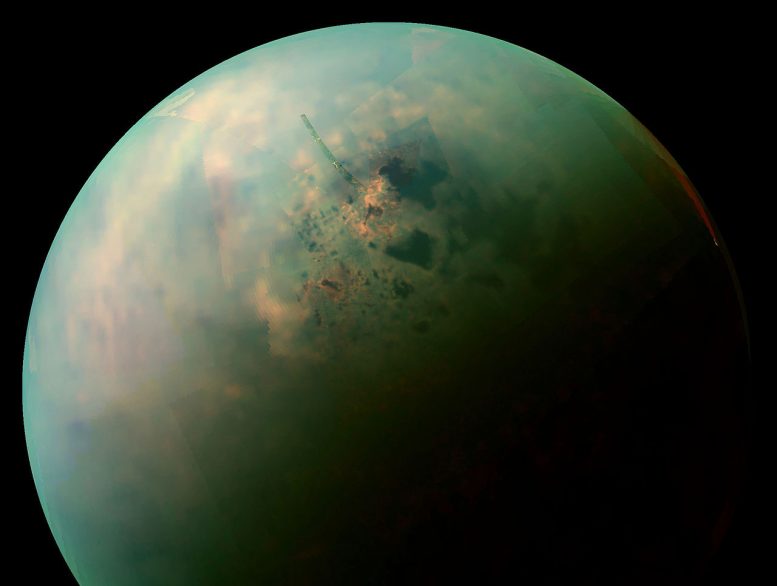
A false-color, near infrared view of Titan’s northern hemisphere collected by NASA’s Cassini spacecraft showing the moon’s seas and lakes. Orange areas near some of them may be deposits of organic evaporite minerals left behind by receding liquid hydrocarbon. Credit: NASA / JPL-Caltech / Space Science Institute
The frigid lakeshores of Saturn’s moon Titan might be encrusted with strange, unearthly minerals, according to new research being presented here.
Scientists re-creating Titan-esque conditions in their laboratory have discovered new compounds and minerals not found on Earth, including a co-crystal made of solid acetylene and butane.
Acetylene and butane exist on Earth as gases and are commonly used for welding and camp stove fuel. On Titan, with its extremely cold temperatures, acetylene and butane are solid and combine to form crystals, the new research found.
The new mineral might be responsible for the bathtub rings that are suspected to exist around Titan’s hydrocarbon lakes, according to Morgan Cable of NASA’s Jet Propulsion Laboratory at the California Institute of Technology, who will present the new research Monday at the 2019 Astrobiology Science Conference.
Titan’s lakes are filled with liquid hydrocarbons. Previous research using images and data gathered during the Cassini mission has shown that lakes in the moon’s dry regions near the equator contain signs of evaporated material left behind, like rings on a bathtub.
To create Titan-like conditions in the laboratory, the researchers started with a custom-built cryostat, an apparatus to keep things cold. They filled the cryostat with liquid nitrogen to bring the temperature down. They then warmed the chamber slightly, so the nitrogen turned to gas, which is mostly what Titan’s atmosphere contains. Next, they threw in what abounds on Titan, methane and ethane, as well as other carbon-containing molecules, and looked for what formed.
The first things to drop out of their Titan hydrocarbon soup were benzene crystals. Benzene is perhaps best known as a component of gasoline and is a snowflake-shaped molecule made out of a hexagonal ring of carbon atoms. But Titan benzene held a surprise: The molecules rearranged themselves and allowed ethane molecules inside, creating a co-crystal.
The researchers then discovered the acetylene and butane co-crystal, which is probably a lot more common on Titan than benzene crystals, based on what’s known about the moon’s composition, Cable said.
In the moon’s cold climate, the acetylene-butane co-crystals might form rings around the moon’s lakes as the liquid hydrocarbons evaporate and the minerals drop out – in the same way that salts can form crusts on the shores of Earth’s lakes and seas, according to Cable.
To confirm whether Titan has bathtub rings of co-crystals and other, undiscovered, hydrocarbon crystals, scientists will have to wait until a spacecraft can visit the shorelines of this moon, Cable said.
“We don’t know yet if we have these bathtub rings,” Cable said. “It’s hard to see through Titan’s hazy atmosphere.”
Reference: “A Co-Crystal between Acetylene and Butane: A Potentially Ubiquitous Molecular Mineral on Titan” by Morgan Cable , Tuan H. Vu, Michael J. Malaska, Helen Elizabeth Maynard-Casely, Mathieu Choukroun and Robert Hodyss, 15 November 2019, ACS Earth and Space Chemistry.
DOI: 10.1021/acsearthspacechem.9b00275


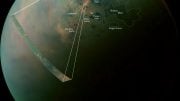
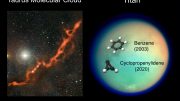
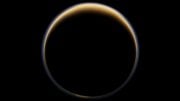
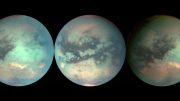
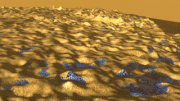
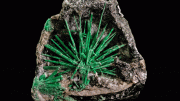
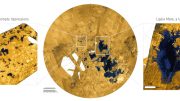
Understanding, that Titan has alien crystalline structures on its shorelines. However,is this really indicative of extra-Solar activity, or perhaps the more mundane and Sol resident activity. Just curious. . .
Taking in what the person who responded prior to this post said, I am no scientist; yet I don’t have a problem responding to what was implied by Mr. Miller’s query; How did you conclude, that Alien to Titan, meant extra-Solar in origin? I cannot see how you concluded that!
Sorry to burst the massive sci-fi bubble here but who writes and proof reads these articles?
Reading The passage “The frigid lakeshores of Saturn’s moon Titan might be encrusted with strange, unearthly minerals, according to new research being presented here” is as confusing as it is misleading.
The words “may” and “Unearthly” stand out. The word “may” being used to lean attention towards the possibility of something but not providing any evidence.
Its like if i say to you “I may have a million dollars in a safe at home”.
Secondly The fact that this article is referring to Minerals on another planet being Unearthly? Well excuse me if i need to shout “Duh!” Its not Earth and are all planets not composed of Unearthly materials.
Can we please get back to Science?
In response to Eric J Kidd.
If we look back beyond the birth of the solar system its highly likely that all the planetary elements came from an extra solar source, including our own sun.
The word “Alien” is used to describe anything out of the realm of the familiar and yes this is sometimes used to describe extra terrestrial beings also.
I agree with you that the conclusion made by Ron Miller is confusing and i think the composition of most planets is completely the opposite of alien by definition as most of the gases and elements found on Earth can be found on other planets, whether that be Hydrogen, Argon, Phosphor, Silica etc.
We would really have to see images of the Crystalline structures to confirm that they are “alien” in comparison to those found on Earth but how many samples of Crystalline Structures from a large mass size to a nanoscopic scale would we have to view in order to base an accurate comparison? Think of any material, on a microscopic scale take Gemstones for instance and look at the Crystalline structures within. Do they not resemble an alien world?